FVAP 2022 Post-Election Report to Congress
After each federal general election, FVAP produces a Report to Congress with data about voters covered by the Uniformed and Overseas Citizens Absentee Voting Act (UOCAVA):
- Active duty military members
- Their eligible family members; and
- U.S. citizens residing abroad.
In addition to voter registration and participation rates, the Report to Congress includes insights into the UOCAVA voting process and assistance provided to UOCAVA voters. These insights are compiled from FVAP's post-election surveys of active duty military members, overseas citizen voters, military voting assistance officers, and state election officials.
Highlights from the 2022 Post-Election Report to Congress
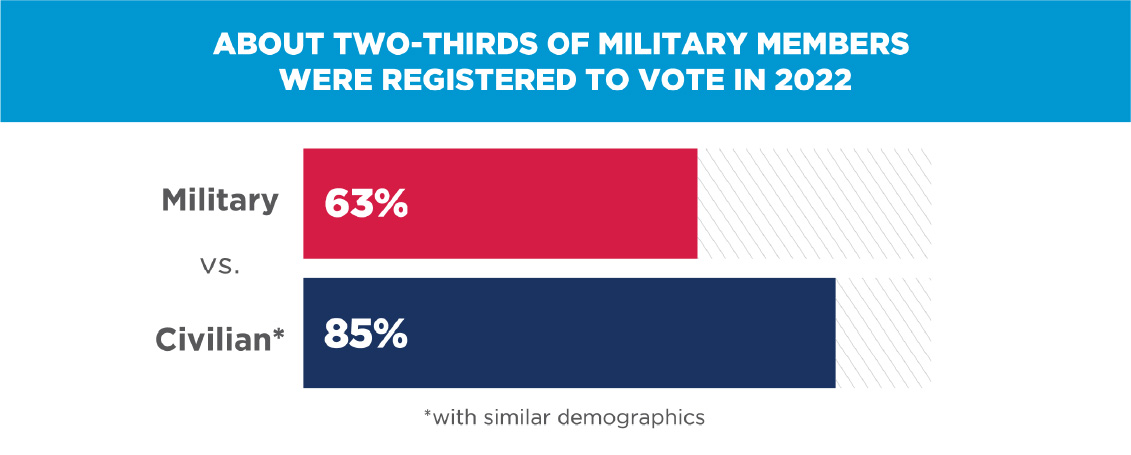
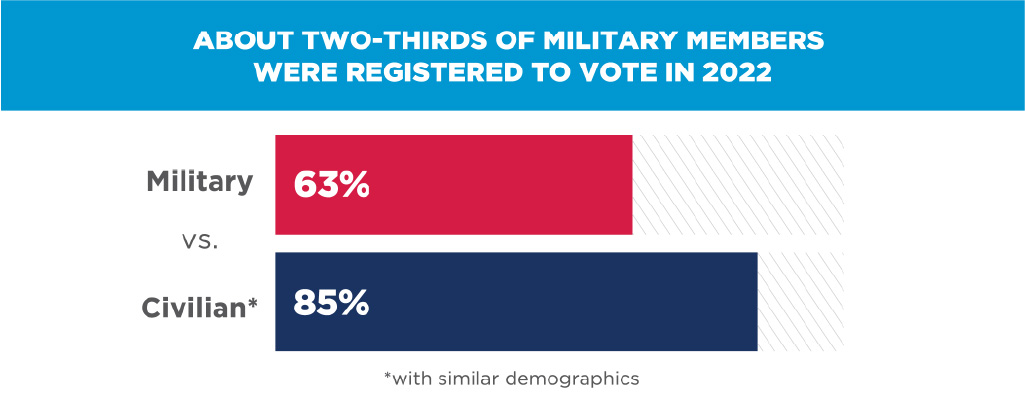

The 2022 voter registration rate for military was 63 percent, a four-point increase from 2018.
When adjusting for demographic differences between Service members and civilians (age, sex, education, etc.), the registration rate for military was 11 percentage points lower than the general population.
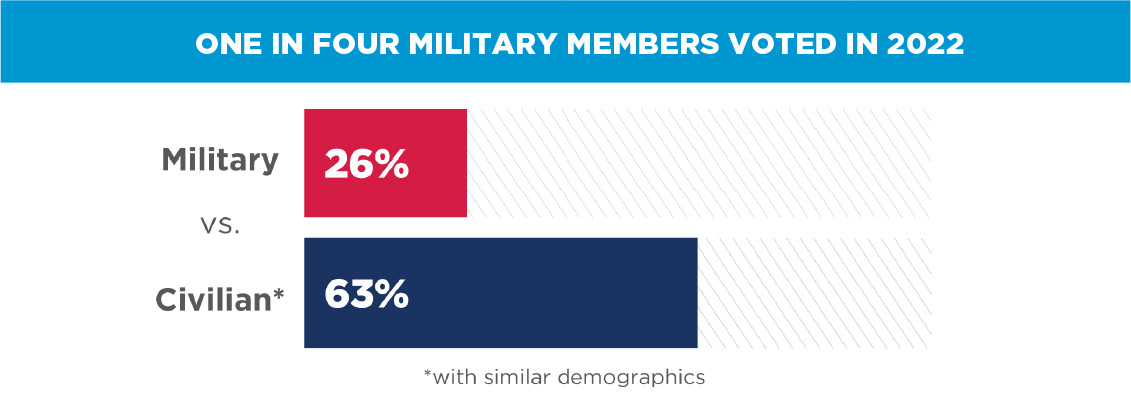
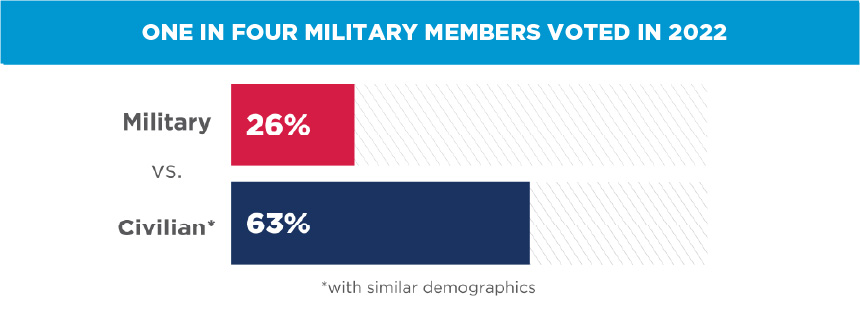
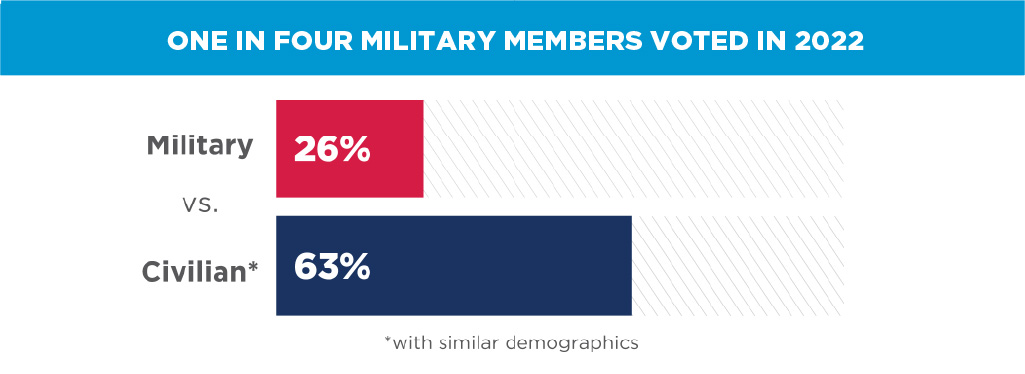
While active military members' participation stayed the same, civilian voting participation
dropped in 2022.
Although the military voter participation rate was substantially lower than for civilians in 2018 (26% vs. 67%, respectively), participation for Service members stayed the same in 2022, while civilian participation dropped 4 points to 63% from 67% in 2018.
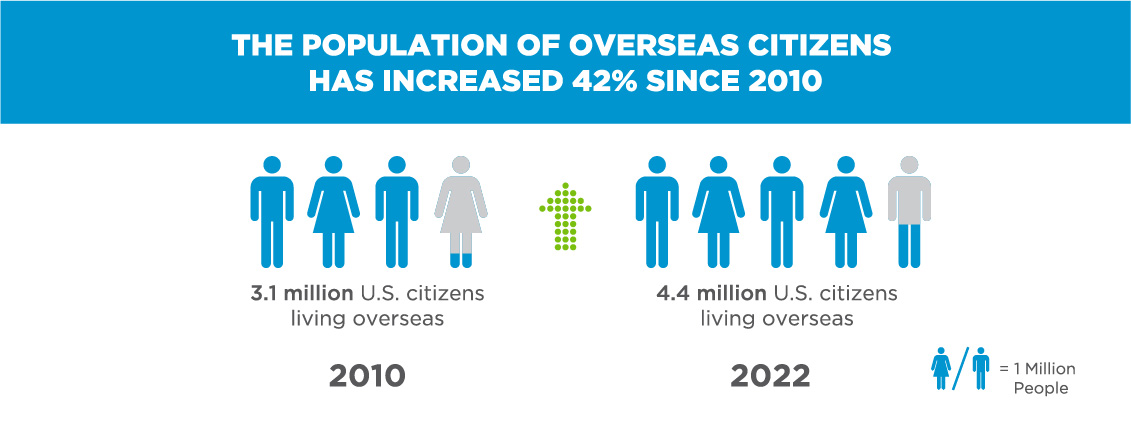
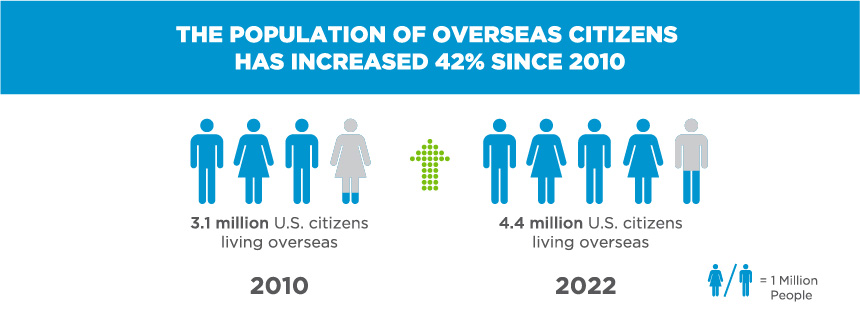
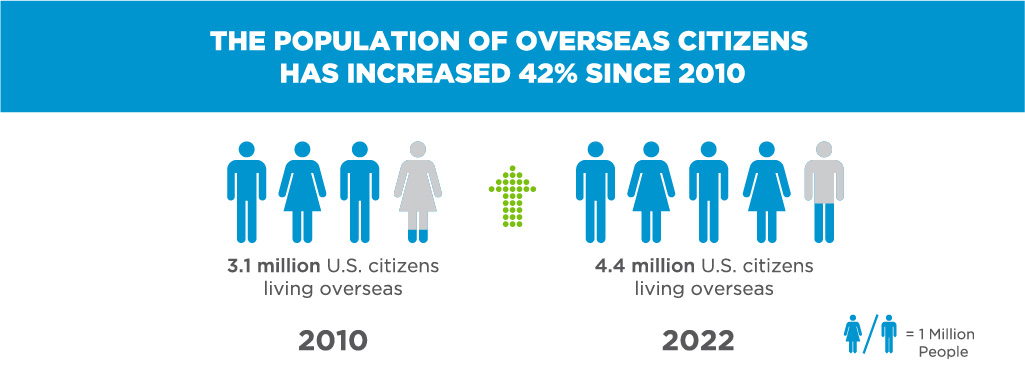
The 2022 "Overseas Citizen Population Analysis" conducted by FVAP estimated there were 4.4 million U.S. citizens living overseas in 2022. This represents an increase of slightly less than 1.3 million U.S. citizens (a 42 % increase) since 2010.
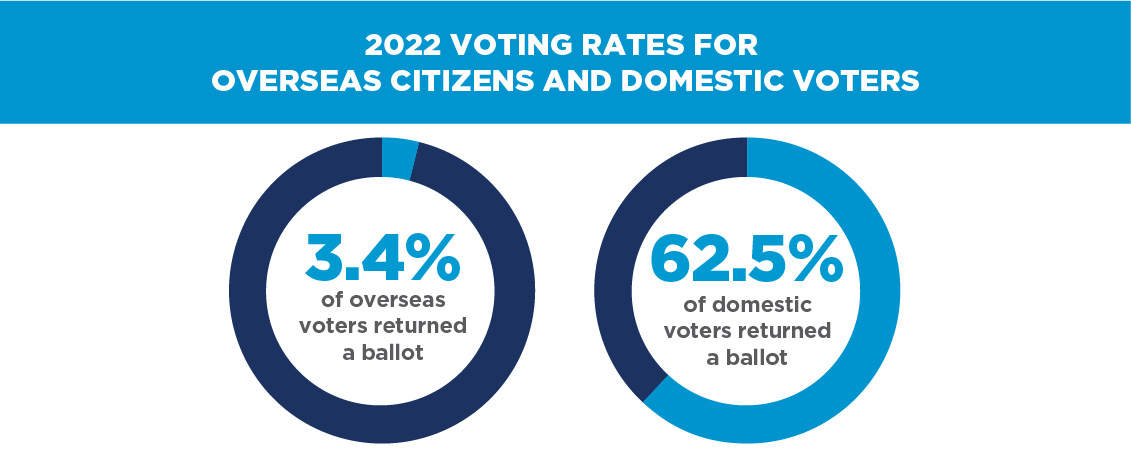
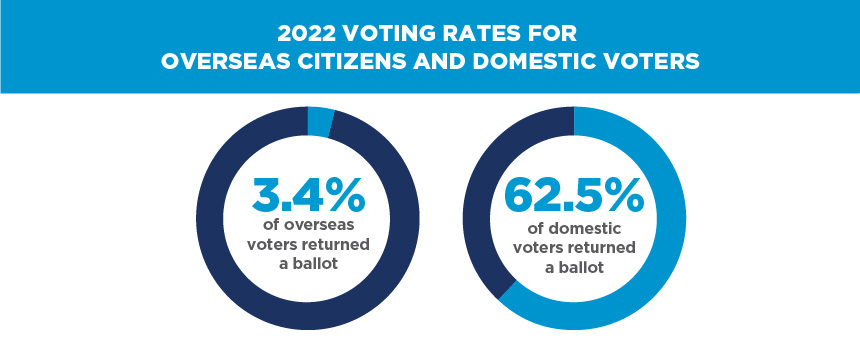
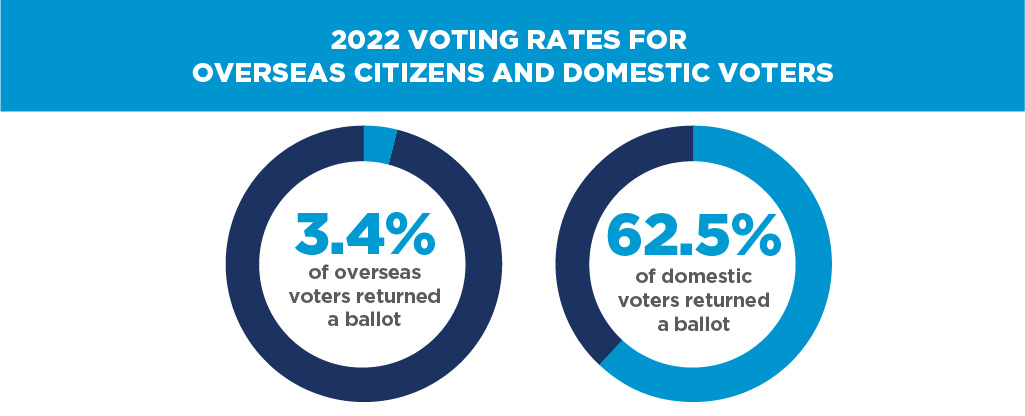
U.S. citizens living abroad consistently vote at much lower rates in U.S. elections. An estimated 3.4% of eligible overseas voters returned a ballot during the 2022 General Election, while an estimated 62.5 % of domestic voters returned a ballot in 2022.
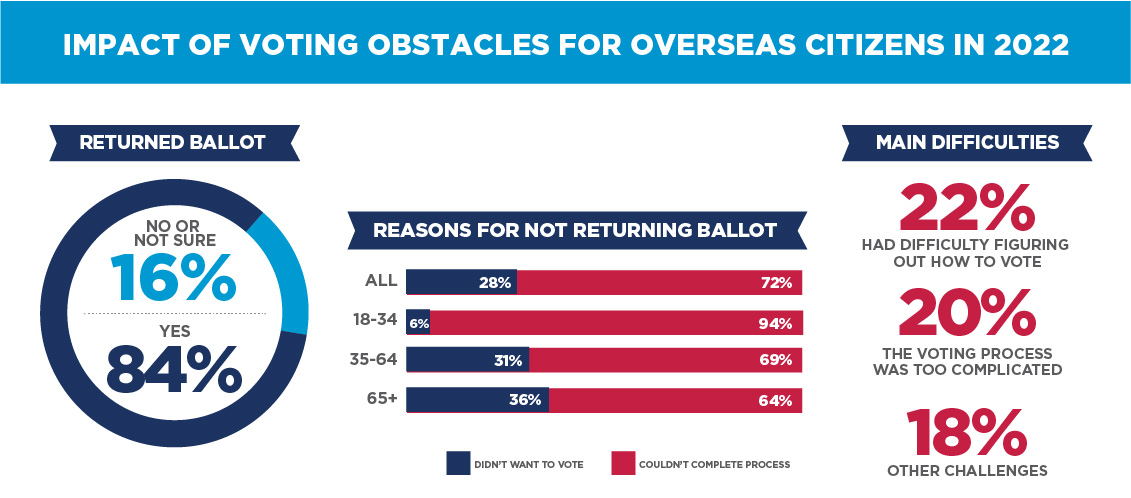
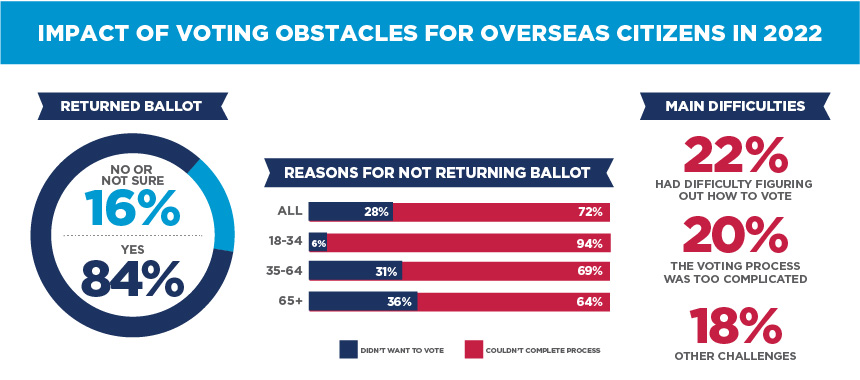
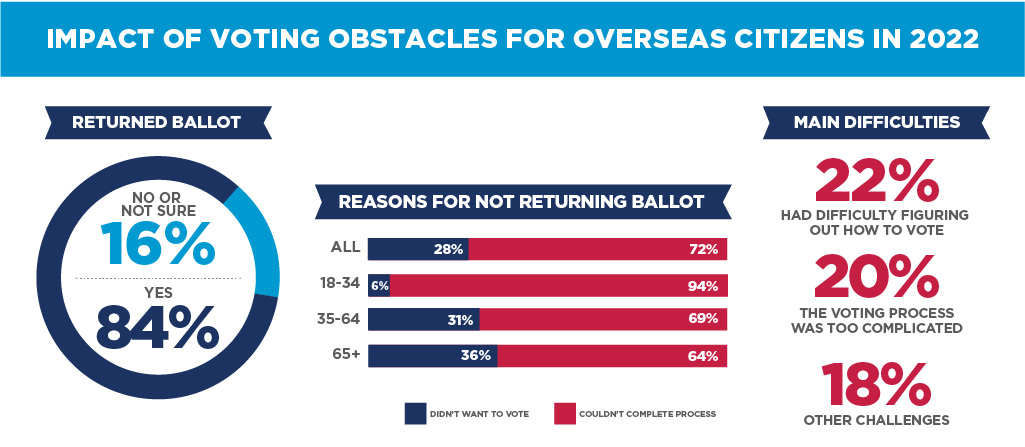
Among overseas citizens who did not return their voted ballot, some did not want to vote while others encountered obstacles in completing the process. Across all age groups, those who did not vote reported that difficulties completing the process prevented them from returning their absentee ballot. This was especially true for the youngest voters, who were up to 19 times more likely to have trouble completing the process than they were to report not wanting to vote.
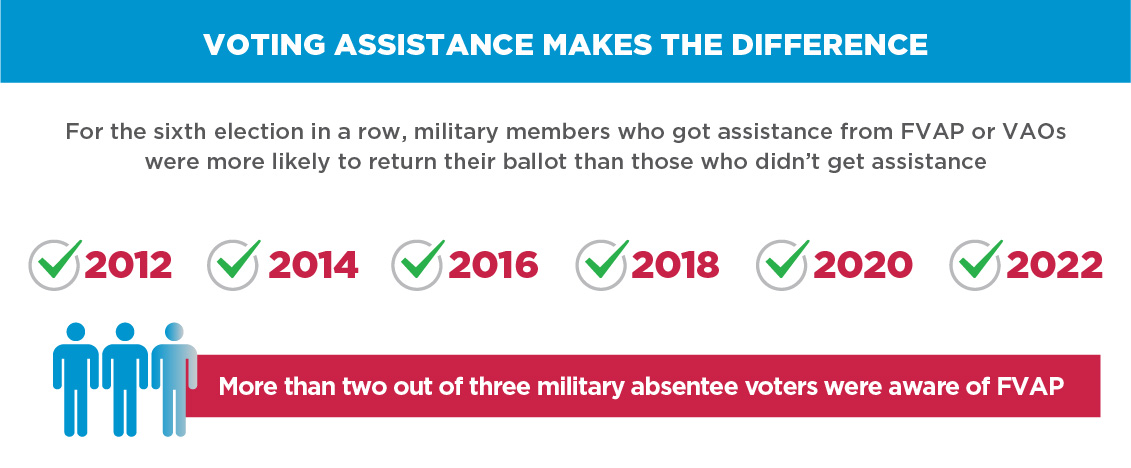
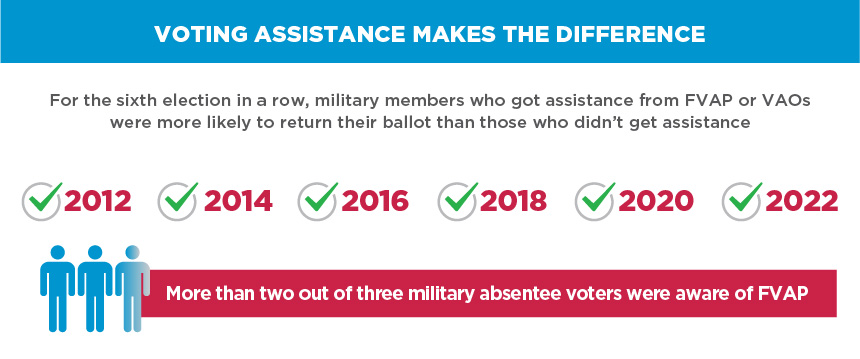
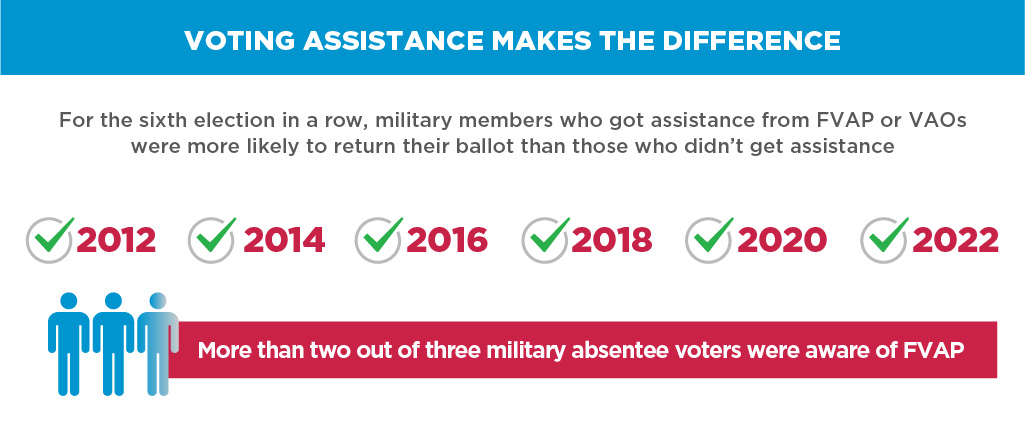
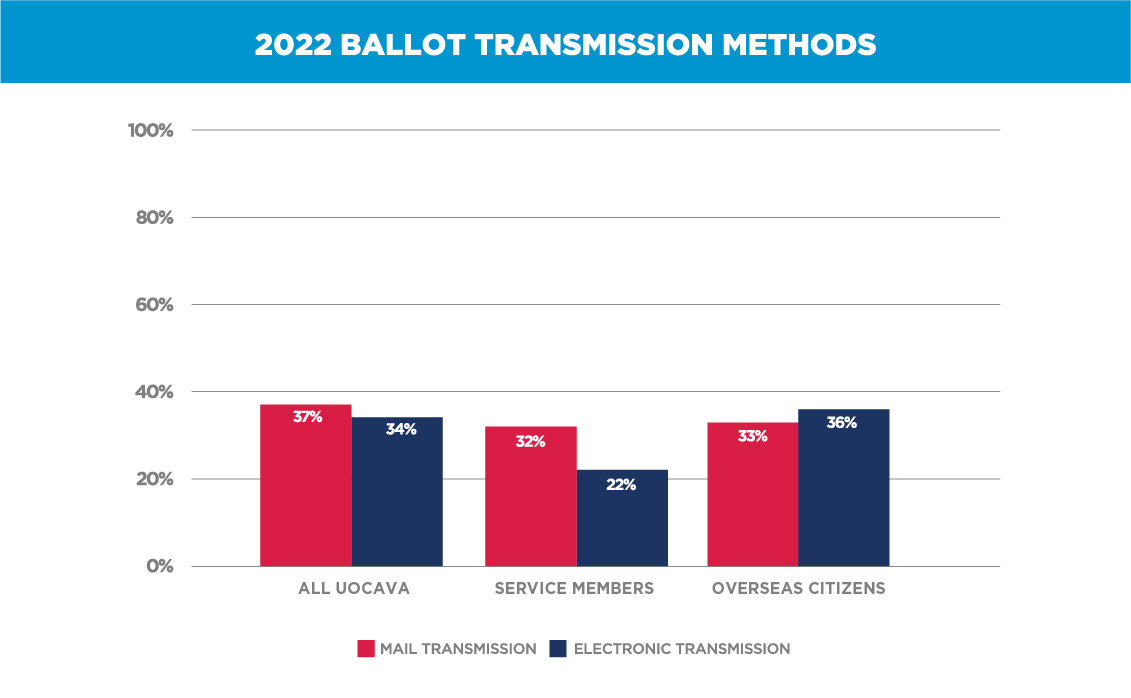
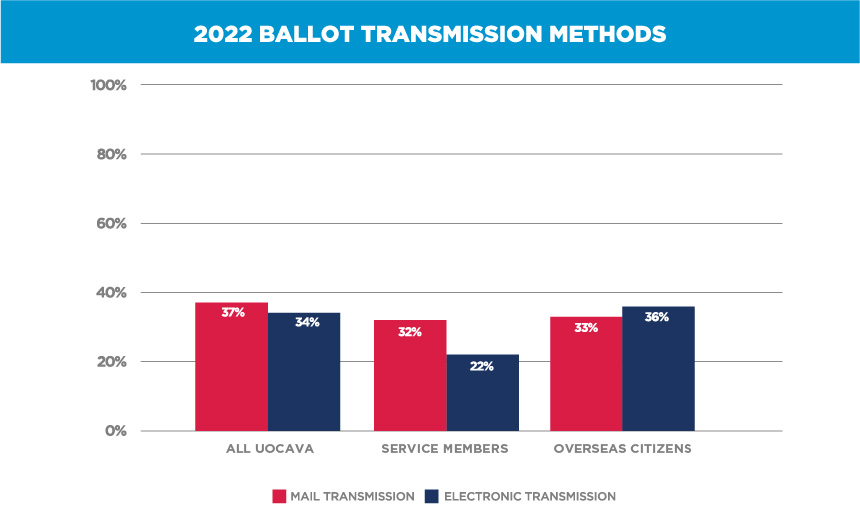
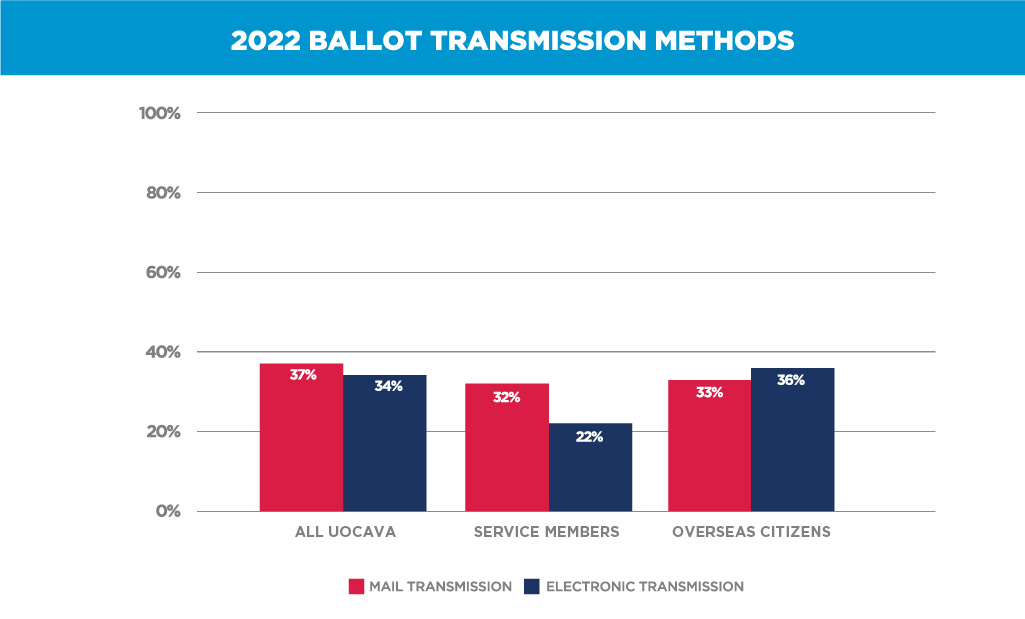
Overseas citizens mostly relied on electronic transmission to receive their blank absentee ballots for the 2022 election, while Service members mostly relied on mail transmission. These results indicate that offering mail and electronic ballot return options is equally important when it comes to reducing the obstacles that UOCAVA voters might face when returning their ballots.
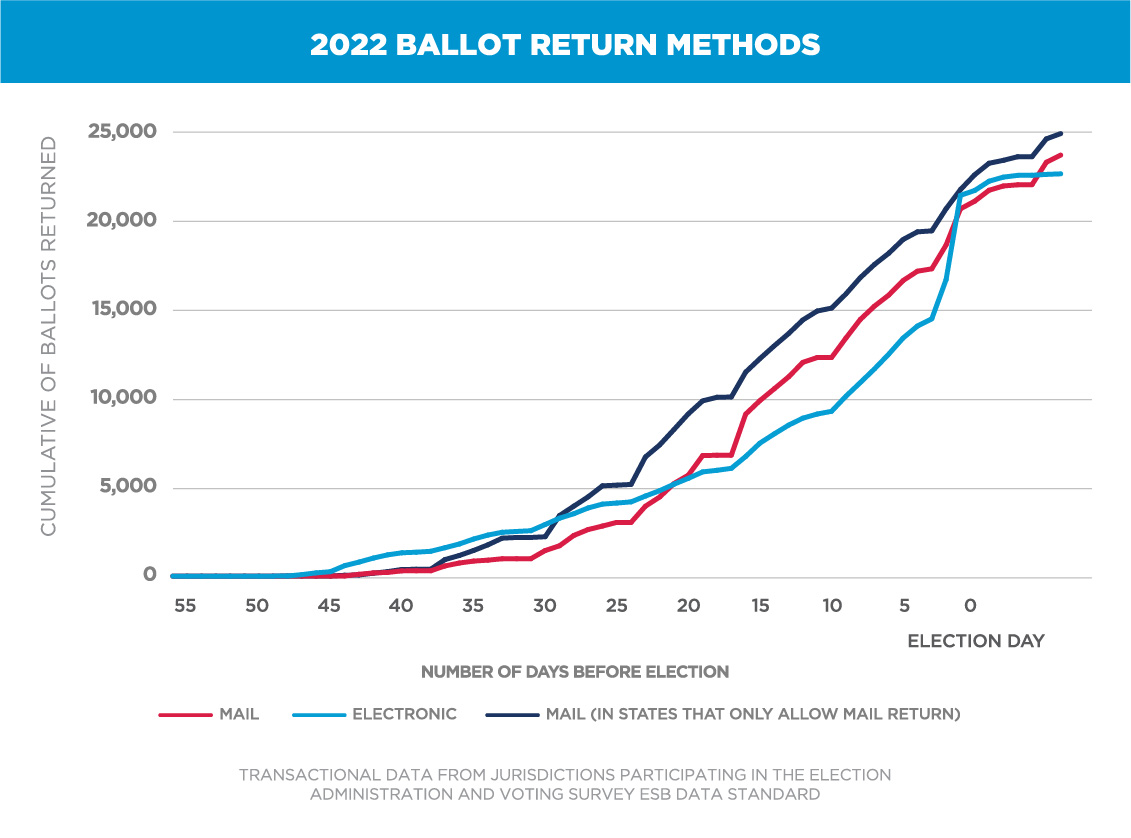
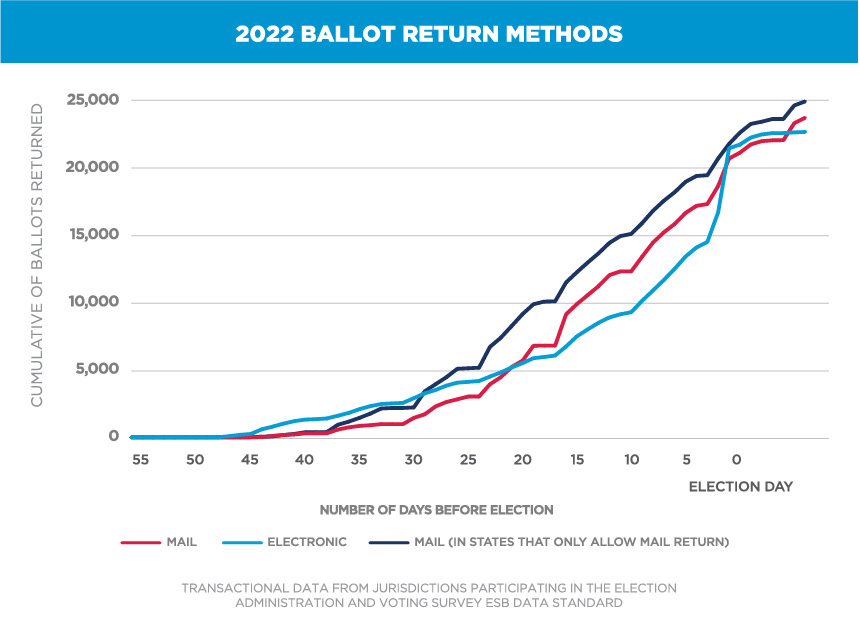
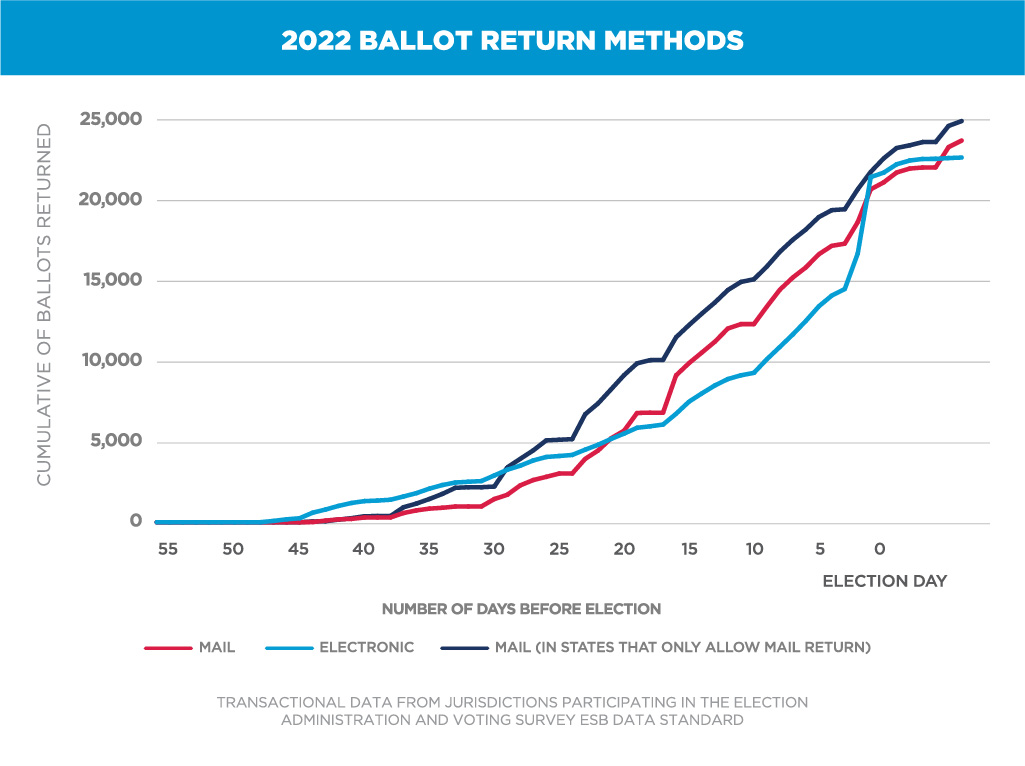
In 2022, electronic and mail ballot return were used at similar rates among states that allowed for electronic ballot return. The use of electronic ballot return was concentrated in the days before Election Day with almost half of the ballots returned electronically being received in the seven days leading up to Election Day.
See the full report for the 2022 Post-Election Report to Congress to learn about FVAP's activities supporting all UOCAVA voters.
See all previous volumes of the Post-Election Report to Congress:
FVAP offers a rich repository of information and data about military and overseas citizen voters, state election officials, and military voting assistance officers.
The State of the Military Voter and State of the Overseas Voter web pages provide insights on these groups' voting experiences from the most recent election year. In addition, the Interactive Data Center contains key data and trends over time for military and overseas voters, as well as state election policies.
Detailed information on each group for each election year is included in the technical reports on the Overseas Citizen Population Analysis, the Post-Election Voting Surveys of active duty military, state election officials and Voting Assistance Officers, and the EAVS Section B Research Notes.




